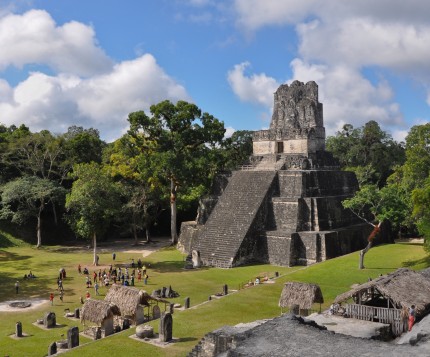The Hobbit: Why Are There No Women in Tolkien’s World?

(MORE: The Hobbit: Why Go There and Back Again?)
The film opens in the nice domestic setting of hobbit Bilbo Baggins’ cozy home. Bilbo has a story to tell his young nephew or cousin — the relationship and intermediary relatives are unclear — named Frodo. We are introduced to the plight of the dwarf king Thorin, who is identified as “the son of Thráin, the son of Thrór.” Thorin’s precious-mineral-based kingdom was ransacked and occupied by a dragon and he wants it back. A wizard named Gandalf appoints Bilbo to help and soon a whole bunch of short men show up on his doorstep. They all set off into enemy territory, and about two-thirds in we finally meet someone without a Y chromosome, an elf princess played by Cate Blanchett who can read Gandalf’s mind. Although she’s on screen for only about five minutes, I was so grateful that it didn’t even bother me that her main character trait is that she’s intuitive. I have since found out that she doesn’t even appear in the book of The Hobbit but was added to the movie because, in the words of one screenwriter, “You start to feel the weight of 13 hairy dwarves.”
(MORE: Why Pixar’s Brave Is a Failure of Female Empowerment)
I did not read The Hobbit or the Lord of the Rings trilogy as a child, and I have always felt a bit alienated from the fandom surrounding them. Now I think I know why: Tolkien seems to have wiped women off the face of Middle-earth. I suppose it’s understandable that a story in which the primary activity seems to be chopping off each other’s body parts for no particular reason might be a little heavy on male characters — although it’s not as though Tolkien had to hew to historical accuracy when he created his fantastical world. The problem is one of biological accuracy. Tolkien’s characters defy the basics of reproduction: dwarf fathers beget dwarf sons, hobbit uncles pass rings down to hobbit nephews. If there are any mothers or daughters, aunts or nieces, they make no appearances. Trolls and orcs especially seem to rely on asexual reproduction, breeding whole male populations, which of course come in handy when amassing an army to attack the dwarves and elves.
(MORE: Fall TV: Strong Female Characters Can Negate Negative Effects of TV Violence)
There are, no doubt, many who know the Tolkien oeuvre much better than I who will protest my complaint. “There are very few women, but those that there are have great power,” one such aficionado has reminded me. Others will point out that there are plenty of modern classics with hardly any female characters enjoyed by both boys and girls, from Tintin to The Muppets.
And then there is the argument that none of this should matter, that it’s not just fiction but fantasy after all. But Peter Jackson, the director of The Hobbit, has said, “To me, fantasy should be as real as possible. I don’t subscribe to the notion that because it’s fantastical it should be unrealistic. I think you have to have a sense of belief in the world that you’re going into, and the levels of detail are very important.” I should think that would include — especially in an intergenerational saga — something as important as the perpetuation of species, whether furry-footed or not.
Read more: http://ideas.time.com/2012/12/31/the-hobbit-why-are-there-no-women-in-tolkiens-world/#ixzz2Gq2Q6PKG






